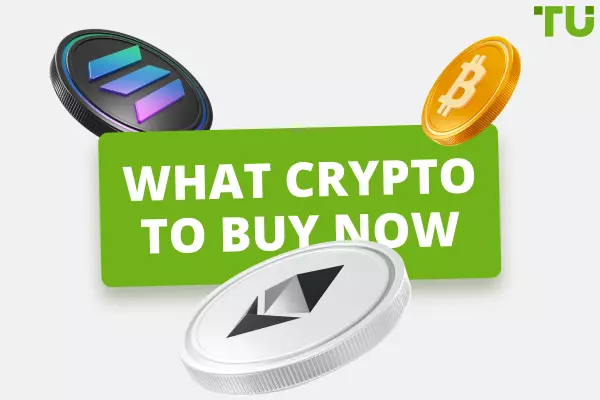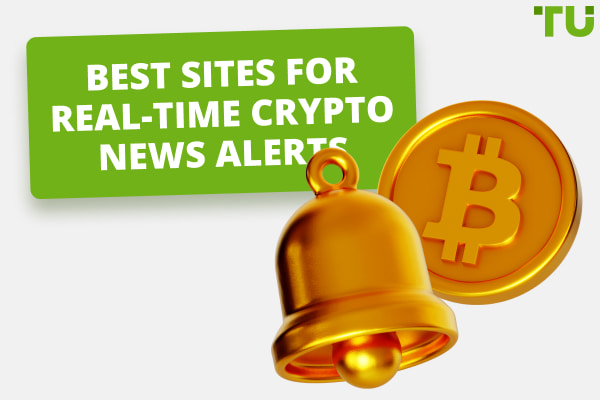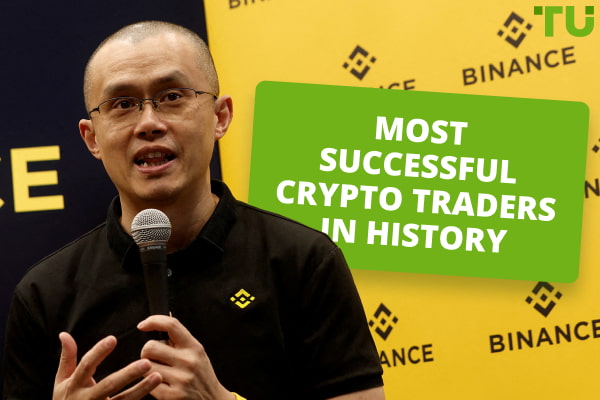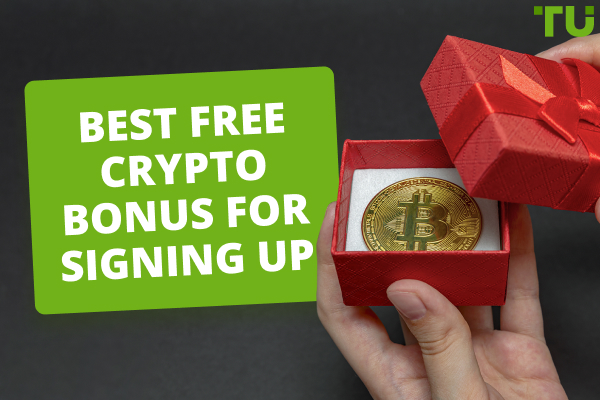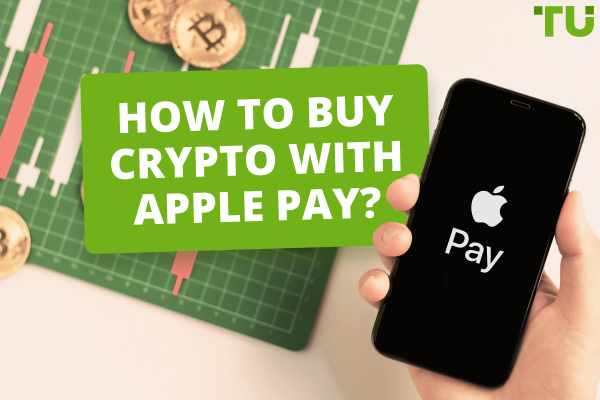Binance Smart Chain Wallet Review
Binance is one of the most famous exchanges globally, and its smart chain wallet is just as popular. The question is, is it safe to use? Can you trust the wallet with your money? This article covers everything you need to know about the Binance smart chain wallet and its security.
Safety |
Good |
Usability |
Great |
Best for (for example, for multi asset storage, for bitcoin storage/eth/nft, for cold/hot storage) etc. |
Cold Storage, Multi-Asset Storage, dApps and NFTs |
Binance Smart Chain Wallet Profile
Here is a complete profile of the Binance smart chain wallet.
| Name | Binance Chain Wallet |
|---|---|
Website |
|
Supported Crypto Assets |
Over 80 supported cryptocurrencies, including: |
Web 3 Support (dApps, NFTs) |
dApp |
Ethereum token support |
Yes |
Web Wallet |
Yes |
Mobile App |
Yes |
Cold Storage |
Yes |
Private Key Storage |
Non-custodial storage |
Linked Exchanges |
Binance Cryptocurrency Exchange |
Fees |
0.1% trading fee or 25% discount if you hold Binance coin |
Customer Support Channels |
Support Center- |
What is the Binance Chain Wallet?
The Binance chain wallet is the official cryptocurrency wallet by Binance, which allows you to access the Binance Chain, Binance Smart Chain, and Ethereum. This wallet lets you store any type of cryptocurrency securely while connecting to various projects across blockchains.
Binance acquired this Trust Wallet in July of 2018 and has since expanded its utility to 80+ cryptocurrencies and dApps. Besides storing all ERC20 and ERC721 tokens, Trust also supports 14 blockchains.
That includes Bitcoin, Bitcoin Cash, Dash, GoChain, Ethereum, Ethereum Classic, Callisto, POA Network, ICON, Litecoin, TRON, TomoChain, VeChain, and WanChain.
The CEO of Trust Wallet, Viktor Radchenko, became an early crypto investor in 2013 when he first heard about Bitcoin. He got the idea for the Trust Wallet once he realized none of the available crypto wallets had all the features he needed.
Now, the chain wallet features platform-related and hardware-related integrations and cold storage.
Basic Functionality
The Binance Chain Wallet or Trust Wallet may seem like any other extension-based wallet, but that's not the case. But, it has many features that set it apart from its competitors, mainly its basic functionality.
Those that already have a Binance account can easily attach it to their Binance Chain Wallet using their Wallet Direct technology. This way, users don't have to copy and paste addresses when transferring digital assets between platforms.
The Binance Chain Wallet allows you to swap BNB with other tokens or mint NFTs. Other than that, the wallet also facilitates yield farming.
H3 Supported Coins
Here is the complete list of coins supported by the Binance chain wallet.
0x (ZRX)
1inch Network (1INCH)
Aave (AAVE)
Algorand (ALGO)
Alien Worlds (TLM)
Amp (AMP)
Ankr (ANKR)
ApeCoin (APE)
API3 (API3)
Aragon (ANT)
Audius (AUDIO)
Augur (REP)
Avalanche (AVAX)
Axie Infinity (AXS)
Bancor (BNT)
Band Protocol (BAND)
Basic Attention Token (BAT)
Biconomy (BICO)
Bitcoin Cash (BCH)
BUSD (BUSD)
Cartesi (CTSI)
ChainLink (LINK)
Chiliz (CHZ)
Compound (COMP)
Cosmos (ATOM)
COTI (COTI)
Curve (CRV)
DAI (DAI)
Dash (DASH)
Decentraland (MANA)
Elrond (EGLD)
Enjin Coin (ENJ)
EOS (EOS)
Ethereum Classic (ETC)
Ethereum Name Service (ENS)
Fantom (FTM)
Filecoin (FIL)
Flux (FLUX)
Gala Games (GALA)
Harmony (ONE)
Hedera Hashgraph (HBAR)
Helium (HNT)
Horizen (Zen)
ICON (ICX)
iExec (RLC)
Kyber Network Crystal v2 (KNC)
Livepeer (LPT)
Loopring (LRC)
Maker (MKR)
Nano (XNO)
NEAR Protocol (NEAR)
NEO (NEO)
Numeraire (NMR)
OMG Network (OMG)
Ontology (ONT)
Orchid (OXT)
Origin Token (OGN)
Pax Gold (PAXG)
Polygon (MATIC)
Polymath (POLY)
Qtum (QTUM)
Ravencoin (RVN)
Request (REQ)
Shiba Inu (SHIB)
Smooth Love Potion (SLP)
Storj (STORJ)
Synthetix Network Token (SNX)
Sushi (SUSHI)
Tether (USDT)
TerraUSD (UST)
Tezos (XTZ)
The Graph (GRT)
USD Coin (USDC)
Vechain (VET)
VeThor Token (VTHO)
Voxies (VOXEL)
Waves (WAVES)
Wrapped Bitcoin (WBTC)
yearn.finance (YFI)
Zcash (ZEC)
Zilliqa (ZIL)
Pros and Cons
👍 Pros
• Has a simplistic, easy-to-use interface for beginners.
• Supports 80+ cryptocurrencies.
• Cold storage allows for better security.
• Non-custodial nature gives users complete control over their assets.
• Allows you to connect it with the Binance account.
👎 Cons
• The new generation of wallets makes it prone to bugs.
Binance Wallet Fees - Is it Free?
Trading on the Binance Chain Wallet isn't free, but has surprisingly low transaction fees. There's a 0.1% spot-trading fee on the Binance Wallet Chain and a 4.5% fee for debit card purchases. The best part is that you get a 25% discount if you already have BNB tokens in your wallet.
In addition, the wallet allows multiple different types and methods of transaction, such as credit card, debit card, limit order, market order, stop-limit order, trailing stop order, post-only order, peer-to-peer trading, and margin trading, one-cancels-the-other order, or more.
Is the Binance Smart Chain Wallet Safe?
The Binance Smart Chain Wallet uses the same security measures as the Binance exchange and website. In addition, it utilizes two-factor authentication, addresses whitelisting, and device management to ensure only you have access to your digital assets.
Plus, it's a non-custodial platform, which means users have complete control over all their valuables. The best part about the Binance Smart Chain Wallet is that it offers cold storage, which means all your digital assets are stored offline.
This makes it nearly impossible for hackers to access the crypto stored in your wallet. Furthermore, in case of security breaches, the platform promises that the Federal Deposit Insurance Corp insures all US dollar deposits.
It's worth noting that Binance's compliance team grew by 500% in 2023.
Private Key Storage
The Binance Chain Wallet is a non-custodial platform, which means it doesn't hold its users' tokens or private keys. This way, all users hold their private keys and tokens independently, making data breaches more difficult.
In addition, you'll receive a 12-word seed phrase when you first create your Binance Chain Wallet account. You can use this collection of words to access your wallet and ensure no one else gets in.
Make sure to copy and paste this seed phrase into a flash drive so that you never lose it. Once you note down your seed phrase, Binance hands over your private key.
Does Binance Wallet Support Cold Storage?
The Binance Wallet supports cold storage, which means all your assets are stored offline. To steal your valuables from a cold wallet, someone would have to physically steal your private key, which is nearly impossible for online hackers.
Hardware wallets are another form of cold wallets, considered the safest way to store crypto.
Has Binance Wallet had any Security Compromises?
In May 2019, hackers stole approximately $40 million from the Binance cryptocurrency exchange, equivalent to about 7,000 bitcoins. Binance stated that the hackers combined viruses, phishing, and other attacks.
The hackers waited patiently to execute their well-orchestrated plan via multiple independent accounts. The transaction passed Binance's current security measures and compromised multiple accounts with high net worths.
After the incident, the company conducted a week-long security review, during which they disabled deposits and withdrawals. The losses were covered by Secure Asset Fund for Users from Binance.
Since then, Binance has strengthened its security measures, and there have been no reports of security compromises. It's also worth noting that this security breach occurred on the Binance global website, not the Binance US website or Binance Chain Wallet.
Binance Wallet Features Review
The Binance Chain Wallet is mainly known for its ease of use and low transaction fees. Other than that, you can find most of its features on any other wallet. However, the Binance Chain Wallet provides a simplified version, especially for beginners.
One of the main ways it differs from other wallets is that it offers the option to link your Binance account with your Binance Chain Wallet with the help of Wallet Direct. This takes away the manual labor of repetitively copy-pasting addresses when it's time to transfer crypto.
You can also use your Google wallet while signing up for the Binance Chain Wallet, which is an integration most wallets don't offer. This way, you can use the Google login method, any local device, or seed phrase to open your Binance wallet in case you lose the private key.
How to Download and Set Up Binance Chain Wallet
Here are the steps you need to follow to download and set up your Binance Chain Wallet account.
-
Firstly, you must download the Binance Chain Wallet from the Binance Chain homepage. Open the browser on which you want to install this extension.
-
You'll land on the sign-up page once you've installed the extension. For example, you can even create an account using your Gmail ID.
-
Otherwise, you may use a pre-existing crypto wallet as long as you have your tKey login credentials or seed phrase.
-
Click on "Create Wallet" before selecting "Continue with tKey via G."
-
Log in using your Gmail ID on the pop-up screen. The Binance Chain Wallet will then use your Gmail account to authenticate your ID in the future.
-
Next, you must create a password that acts like an additional protective layer in case your private key gets lost.
-
Now, you'll receive the seed phrase for your Binance Chain Wallet. You can use this seed phrase to recover your account. Plus, you can also create your own seed phrase. A seed phrase typically contains 12, 15, 18, 21, or 24 words.
-
Make sure that no one ever finds out your seed phrase, just like a banking account password or pin. You can use your tKey password and Gmail address to access your account if you lose your seed phrase.
-
Once you've noted the seed phrase, click on "Continue."
-
You have successfully set up your Binance Chain Wallet. Now, you may send or receive BSC, Binance Chain, and Ethereum tokens. Users can also interact with DApps and smart contracts across blockchains.
How To Use Binance Chain Wallet
Here's all you need to know about using the Binance Chain wallet. The interface is simple and beginner-friendly, so you won't have to navigate through any complicated options. Whether you're sending, exchanging, buying, or selling crypto, the Binance Chain Wallet makes the process easy.
Just like any other wallet, the Binance Chain wallet offers to send and receive buttons. The plus "+" button allows you to add tokens and projects.
How Do I Send Crypto Out of Binance
Here is how you can send crypto out of the Binance Chain Wallet:
-
To interact with the Binance Smart Chain, you must have some BNB tokens in your wallet. While transferring assets, you'll have to pay transaction fees.
-
Once you have some BNB in your Binance Chain Wallet, it's safe to connect your account to the Binance Chain Wallet with the help of the Wallet Direct feature.
-
Click the icon on the wallet's homepage in the top right corner before clicking on "Connect to Binance.com account."
-
Then, use your login credentials to open your Binance account before clicking on "Verify and connect my address."
-
In the next pop-up, click on "Connect to wallet." This will lead you to the Binance Chain Wallet, where you have to click on "Connect."
-
Next, allow your wallet to sign Binance's message and verify you as the wallet's owner.
-
After completing these steps, follow the on-screen instructions for Binance's authentication process for an additional layer of security. You may also utilize two-factor authentication to secure your account.
-
Once you're successfully verified, the Binance account will link to the wallet.
-
Click on the "Receive" button and select "Wallet Direct" so you can send crypto out of your Binance Chain Wallet.
-
The available assets you can transfer will now appear on the screen.
How Do I Exchange Crypto in Binance Wallet
Here's how you can exchange crypto on your Binance Smart Chain Wallet:
-
Navigate to the Convert & OTC option on your wallet. Make sure that the cryptocurrency you plan to trade is supported by the Binance Chain wallet.
-
Under "From," select the token you already have. Under "To," select the token you want to exchange it for. Then, enter the number of desired tokens you want to exchange.
-
Then, click on "Preview Conversion." You'll see a price quote for this transaction, for which you have 5 seconds to approve and fulfill the deal. Click on "Refresh" if the timer expires to get a new quote.
-
Click on "Convert." It will take less than a second for the transaction to complete, and the new crypto will appear in your wallet.
-
This method works best for BNB or BUSD tokens.
How to Buy and Sell Crypto in Binance Chain Wallet
Here's how you can buy crypto on your Binance Chain Wallet.
-
Click on "Buy Now" on the homepage of your Binance Chain Wallet.
-
This wallet allows you to buy crypto from different fiat currencies. Enter the fiat amount which you are going to spend, and you'll see the amount of crypto you can get with that money.
-
Click on "Continue."
-
Select your preferred payment method. If you're buying with a credit or debit card, click on "Visa/Mastercard" before selecting "Continue."
-
Follow the on-screen instructions before entering your card information.
-
Then, your card gets added, so click on "Continue."
-
Check the payment details to confirm your order in one minute. Then, click on "Refresh" to check the order amount.
-
This will lead you to the OTP Transaction Page of your bank. Follow the on-screen instructions for the payment verification.
-
You'll find the purchased crypto in Binance Chain Wallet.
Here's how you can sell crypto on the Binance Chain Wallet:
-
On your Binance Chain Wallet, navigate to "Funding." Transfer the amount you want to sell into your funding wallet.
-
Once you have crypto in the Funding wallet, tap on "P2P Trading" on the homepage.
-
Click the "Sell" on the top of the trading page. Select a coin, desired advertisement, and click on Continue.
-
Enter the amount you want to sell and a payment method. Click on the Sell option to place your order.
-
It will display Pending Payment until a buyer makes payment. Once it says "Confirm Receipt," ensure that you've received the payment from the buyer.
-
Tap on "Payment received" and "Confirm" so the buyer can receive the crypto.
Binance Chain Wallet Platforms
You can use the Binance Chain on multiple different platforms, including the web, mobile app, and cold storage.
Web
The Binance Chain Wallet is available as a web extension that works with BSC, Binance Chain, and Ethereum. The extension links to any supported exchange and aids users while they make transactions for crypto.
You can use your Gmail account to sign up for your Binance Chain Wallet. Whenever you need to log in, you can simply enter your Gmail address and they.
Mobile
There is also a mobile app for this digital wallet, called the Trust Wallet, which is free and available for iOS and Android users. This mobile app allows users to store and trade their crypto with ease and even receive discounts if the wallet holds BNB.
Cold Storage
The Binance Chain Wallet supports a cold storage platform, which means it stores your assets offline. This makes it harder for hackers to access your data since they'll have to physically access your private key.
This is possible due to the seed phrase provided by Binance, which you must store separately and never share with anyone.
Summary
The Binance Chain Wallet is safe to use for the most part, but like any other digital wallet, it has its vulnerabilities. It has enough security measures in place to ensure customer trust and reliability, which is why it's one of the top digital wallets in the world.
The wallet allows you to trade, buy, and sell 80+ cryptos and interact with dApps and NFTs. Follow our guide to figure out how to use the digital wallet.
FAQs
Here are the answers to the most frequently asked questions about the Binance Chain Wallet.
How do I move crypto from another wallet to the Binance Chain Wallet?
The Binance Chain Wallet lets you make a crypto deposit from another wallet. Here is how you can do so:
- Navigate to the withdrawal page of the Binance Chain Wallet. From the two network choices, pick the Binance Smart Chain (BSC) network.
- Once you are on the Binance Chain Wallet, click on "Binance Chain Native Token." Then, click on "Receive."
- Add an address for the withdrawing wallet or just scan the given QR code.
- You've successfully moved crypto to your Binance Chain Wallet from another wallet.
How much BNB do I need to send tokens?
You need atleast 0.001 BNB in your wallet to make a transaction. Otherwise, it will say that you have insufficient funds.
Why are my tokens not visible after withdrawing from the Binance Chain Wallet?
Here's what you can do if your tokens are not visible after withdrawing from the Binance Chain:
- Use the Binance Chain Wallet to add the Custom Network feature. Add the Binance Smart Chain's RPC URL endpoints to the wallet.
- Once you've added the Binance Smart Chain to your wallet, you can select different networks and view the tokens held by the selected account.
Team that worked on the article
Andrey Mastykin is an experienced author, editor, and content strategist who has been with Traders Union since 2020. As an editor, he is meticulous about fact-checking and ensuring the accuracy of all information published on the Traders Union platform. Andrey focuses on educating readers about the potential rewards and risks involved in trading financial markets.
He firmly believes that passive investing is a more suitable strategy for most individuals. Andrey's conservative approach and focus on risk management resonate with many readers, making him a trusted source of financial information.
Chinmay Soni is a financial analyst with more than 5 years of experience in working with stocks, Forex, derivatives, and other assets. As a founder of a boutique research firm and an active researcher, he covers various industries and fields, providing insights backed by statistical data. He is also an educator in the field of finance and technology.
As an author for Traders Union, he contributes his deep analytical insights on various topics, taking into account various aspects.
Mirjan Hipolito is a journalist and news editor at Traders Union. She is an expert crypto writer with five years of experience in the financial markets. Her specialties are daily market news, price predictions, and Initial Coin Offerings (ICO). Mirjan is a cryptocurrency and stock trader. This deep understanding of the finance sector allows her to create informative and engaging content that helps readers easily navigate the complexities of the crypto world.



